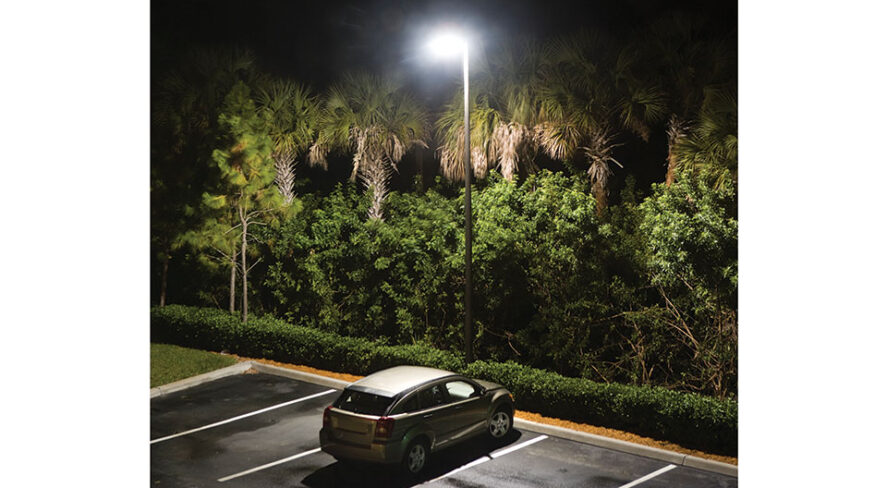How External Illumination Benefits License Plate Recognition

More Light Equals Improved Analytics

Invented in 1976 at the Police Scientific Development Branch in Britain, automated license plate recognition (ALPR) represents one of the first applications of artificial intelligence (AI) and machine learning.
At the most basic level, ALPR systems capture an image of a vehicle’s license plate and transform the picture into alphanumeric characters using optical character recognition.
The Applications of ALPR Technology
Around the world, police departments use ALPR systems to compare detected plate numbers to databases of vehicles of interest. Departments of transportation also use ALPR systems for electronic toll collection and as a method of tracking the ebb and flow of traffic.
In the past decade, with developments in AI, machine learning, surveillance cameras, and related innovations, ALPR systems have progressed. For example, many ALPR systems today use infrared (IR) lighting to enable a camera to perform at any time of day or night. Algorithms used to identify a license plate have also become more complex, which has helped to make ALPR systems more accurate.
And yet, even as these technology components have evolved, many ALPR operators today face the same issues they did in the late-1970s, including object misidentification and high error rates. The good news is that these problems are solvable.
Simple Problems Call for Simple Solutions
There are generally three common roadblocks to successful ALPR software performance:
- Blurry images, particularly as a result of motion blur
- Poor image resolution when a plate is too far away from a camera
- Poor lighting and low contrast because of ambient light, glare and/or harsh environmental conditions
Surprisingly, the solution to these problems is relatively simple. Using external illumination sources – especially IR illuminators – to rebalance lighting in video images not only improves detection accuracy but also ensures that an ALPR system can operate around the clock.
The Magic of External Illumination
Most issues that ALPR software encounters come down to the cameras being deployed. For systems that produce blurred images at dawn, at dusk or during hours of darkness, for example, the problem is often the result of a camera automatically slowing its shutter speed in order to capture more light. For static or slow-moving objects, such as parked cars or sluggish traffic, a slower shutter speed does not create any problems. When a car drives past that same camera at high speed, however, a slower shutter speed will produce an image that is too blurry to read. In this scenario, integrating external illumination is an effective and quick fix.
The situation is similar for systems that struggle to detect license plates at longer distances. Across applications, better illumination has been proven to extend the detection range of many video analytics. The science is simple: If an area is properly illuminated, a camera will produce higher contrast images, making it easier for analytics to differentiate between multiple objects in frame. This equally applies to letters and numbers on a license plate.
Important Installation Considerations
Successful deployment of an external illumination device alongside cameras in an ALPR application depends on several factors. For systems using a dedicated ALPR camera, for example, it is often useful to deploy external illuminators to supplement onboard illumination sources, especially to address problems related to long-range detection and motion blur.
For ALPR applications involving cameras that are also being used for other purposes, such as perimeter intrusion detection, integrating a white light illuminator can improve both intrusion detection and license plate recognition performance. For cameras installed at a significant height in order to avoid obstructions, integrating IR illuminators can provide greater visibility over longer distances than visible light. IR light is also invisible to the naked eye, which may be preferable in some security applications.
Regardless of the specific requirements of a given application, there is an external illuminator purpose-built to meet every need.
